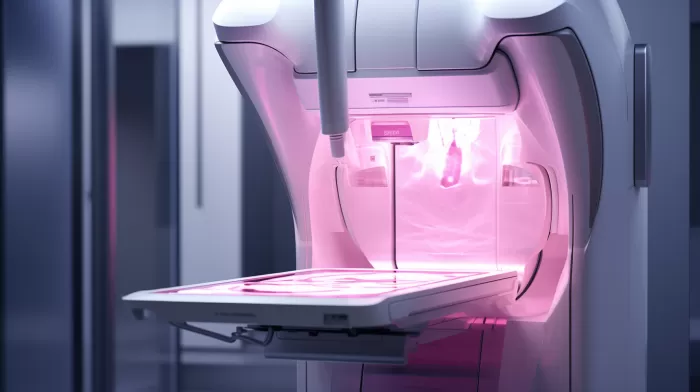For many people, getting tested for cancer may be more dangerous than having cancer. For instance, research shows that women in their 40s who get a mammogram may be putting themselves in harm’s way. But when there’s money to be made from medical tests…
In 2009, the United States Preventative Services Task Force (USPSTF) recognized the futility of women in their 40s getting annual mammograms. Mammograms at that age expose women to radiation that might result in breast cancer, and there’s no evidence screening women with mammograms at that age kept anyone from dying from breast cancer. But women are still having these hazardous tests.
“If the USPSTF recommendations had been widely adopted, we would have expected to see a significant decline in mammography rates among women in their forties,” says researcher Lydia Pace, a global women’s health fellow in the Division of Women’s Health at Brigham and Women’s Hospital in Boston. “However, this study demonstrates that younger women are continuing to get mammograms.
“Our research does not explain the reasons why mammography rates did not decline, but it is worth noting that several prominent professional and advocacy organizations continue to recommend mammography screening for women between the ages of 40 and 49,” says Pace. “Providers may disagree with the USPSTF recommendations or they may not have the time or the tools needed for discussions with patients about the relative benefits and harms of mammography. Patients may also disagree with the recommendations and may still be requesting annual mammograms or self-referring to mammography facilities.”
The Dangers of Mammograms
Although mammograms can be life-saving, they come with their own set of risks and potential harms. These include the radiation exposure, false positives, overdiagnosis, and overtreatment.
- Radiation exposure: Mammograms use low doses of radiation to create images of the breast. While the risk from any one mammogram is very small, repeated exposure can increase the chances of developing breast cancer later in life.
- False positives: Approximately 5-10% of mammogram results are abnormal, leading to additional testing and procedures, potentially including biopsies. Most of these abnormal findings turn out to be false alarms, causing unnecessary stress, anxiety, and expense for the women affected.
- Overdiagnosis: Mammograms may find slow-growing or non-aggressive cancers that would never have caused problems if left undetected and untreated. This can lead to unnecessary treatments, including surgery, radiation, and chemotherapy, all of which carry their own risks.
- Overtreatment: When faced with a cancer diagnosis, many women may feel pressured to undergo aggressive treatments, even if a more conservative approach might be just as effective. This can result in physical and emotional harm, as well as high medical costs.
The Debate Over Mammography Guidelines
The USPSTF’s recommendations generated significant controversy when they were released in 2009, and debates over the appropriate age and frequency for mammography continue to this day. In addition to the USPSTF, other organizations offer their own mammogram screening guidelines, often with conflicting advice. Some of the most prominent include:
- American Cancer Society: Women should begin mammographic screening at age 45, with the option to start at age 40 if desired. Screening should then continue annually until age 54, after which it can shift to every two years. Women should continue screening as long as they are in good health and have a life expectancy of at least 10 more years.
- American College of Radiology: Women should start annual mammograms at age 40, and continue for as long as they are in good health.
- National Comprehensive Cancer Network: Women should begin annual mammograms at age 40, with no specific upper age limit.
These conflicting guidelines can be confusing for both women and their healthcare providers, leading to uncertainty about the best course of action.
What Should Women Do?
Given the risks and uncertainties surrounding mammography, it’s essential for women to educate themselves about the potential benefits and harms and engage in informed decision-making with their healthcare providers. Some key steps include:
- Understanding your personal risk: Women with a strong family history of breast cancer, a genetic predisposition, or other risk factors may benefit from starting mammography at an earlier age or undergoing other screening tests.
- Considering the potential harms: Be aware of the potential for radiation exposure, false positives, overdiagnosis, and overtreatment when deciding whether and when to undergo mammography.
- Discussing screening options with your healthcare provider: Talk to your doctor about your personal risk factors, the various screening guidelines, and your preferences. Together, you can make an informed decision about the best screening plan for your individual situation.
- Staying proactive about breast health: In addition to considering mammography, remember the importance of clinical breast exams, self-exams, and maintaining a healthy lifestyle to minimize your risk of breast cancer.
In conclusion, while mammograms can provide valuable information and potentially save lives, they also come with their own set of risks and challenges. It’s important for women to be aware of these factors and engage in informed decision-making with their healthcare providers about their breast cancer screening options.



